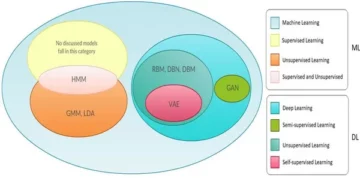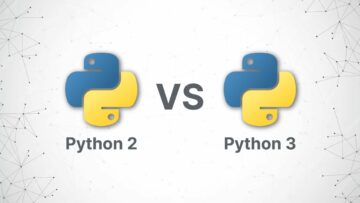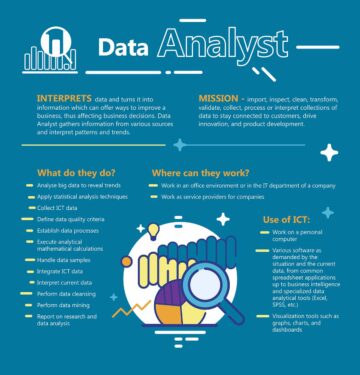Introduction
We are all aware of the Internet’s explosive expansion as a primary source of information and a platform for opinion expression. It has now become essential to gather and analyze the ever-expanding data that follows. While in the past, manual analysis of data has been possible and even served us well, the same cannot be said true for this digital era. Let us say a large chunk of data has to be manually analyzed. Can you do the math involving time and resources associated with it? Difficult, right?
That explains the reason why Internet monitoring tools are gaining traction. These tools enable large-scale data acquisition with Artificial Intelligence (AI) playing the mastermind. AI, coupled with data visualization techniques, makes businesses proficient in utilizing different types of Sentiment Analysis techniques to modify how they react to customer feedback. Let us now discuss what sentiment analysis is.

Source: Pixabay
Learning Objectives
In this article, we will understand the following:
- Sentiment Analysis and how it will add flexibility and insight to the brand’s and its products’ presentation.
- Use cases of Sentiment Analysis.
- Applications of Sentiment Analysis in Business.
This will help respond to the current situation and deliver the goods properly.
Table of Contents
- What is Sentiment Analysis?
- 5 Use Cases of Sentiment Analysis in Corporations
- Top 10 Applications of Sentiment Analysis in Business
- Conclusion
What is Sentiment Analysis?
Sentiment analysis is a data analytics methodology to determine the emotional state or the overtone of the data (textual/audio/video) as positive, negative or neutral. It uses Artificial Intelligence and goes by the name of ‘Opinion Mining’. The text use cases can be categorized by emotion and opinion thanks to Machine Learning algorithms that use Natural Language Processing. For more profound, potent insights, sentiment analysis can be integrated with other Artificial Intelligence tools like Text Summarization. This data can be very useful across various fields, which will be discussed further. Sentiment Analysis is an excellent way to understand customers and staff, safeguard platforms, enhance customer buying, and keep a check on the competition in the market.
The question now arises why there is a need to automate it when humans are doing just fine by themselves, and that too with utmost accuracy.
- While accuracy is a challenging parameter for Sentiment Analysis, it still comes in handy when dealing with massive real-time data.
- Considering the ever-expanding data, the time and resources associated with a human performing the task are impractical.
5 Use cases of Sentiment Analysis in Corporations:
1. Social Media Monitoring:
By sifting the data like online reviews, comments, tweets, and discussions available through social media, many deductions can be made about the ongoing trends and how the audience perceives them. Social media monitoring becomes helpful in this situation. The Sentiment Analysis tool may surface social media sentiments for Natural Language Processing, generating insights by mining customers’ comments about a company. A more focused, sympathetic response to consumers may come from this practice. Also, one may examine a client’s interactions across different platforms using this information and make the required adjustments because, at times, people react more favorably than others on some channels.

Read Twitter Sentiment Analysis: NLP Use-Case:
2. Customer Service Request & Response:
The firm can use sentiment analysis technologies to see what to look for in consumer text, such as conversations or social media posts. It goes beyond simply looking for valuable and harmful keywords. Individual customers’ speech patterns develop over time and surface in groups sharing similar views, such as those congregating in online forums for consumers to discuss goods and services.

Source: Themocracy
3. Market Research:
Sentiment Analysis can offer a different viewpoint on the market and provide valuable insights into how consumers, who are on the ground level, understand the state of things. It can also provide valuable information about the polarity of the data. The range of market trends that sentiment research may address is endless, from forecasting a drop in oil prices due to approaching political upheaval in a region to anticipating which shows would be famous in certain territories for an OTT content platform.

4. Customer Reviews:
An affirmative customer experience increases the likelihood that they will do business again. A successful organization understands how crucial it is to pay attention to ‘how’ rather than ‘what’ they give. Brand monitoring provides us with unfiltered, priceless data about consumer sentiment. However, you can also apply a similar analysis to surveys and customer service encounters. This sentiment data is used by businesses to classify customers as promoters, naysayers, and passives. The objectives are finding the overall customer experience and turning your customer into a promoter.

Source: Pixabay
5. Brand Mentions:
In the world of business applications, Sentiment Analysis can be a total game-changer in completely revamping a brand. Utilizing subjective data for valuable insights is essential for building a successful company. For the past few years, Machine Learning models, which heavily rely on manually constructed features before categorization, have done an excellent job of satisfying this business requirement. The mentions that surface in the media and around people act as primary use cases in determining the sentiment related to the brand in the market.

Source: Pixabay
Top 10 applications of Sentiment Analysis in Business
1. Research and Analysis of Market Trends:
Sentiment Analysis helps in gauging market trends by analyzing the online presence of a brand/product/features. An upcoming brand can also use it to educate itself about what is happening in the industry and what is expected of them in its niche. The brand can use this data to make critical business decisions regarding product features, launches, etc. Deep-dive analysis algorithms have made it feasible to comprehend aspects, traits, and attributes in addition to client sentiment toward a product. These insights help organizations tailor their offerings and make them appealing to their target market. For instance, when analysing customer feedback and menu preferences, food giants like Domino’s, KFC, Pizza Hut, and McDonald’s use sentiment analysis. This aids them in enhancing consumer satisfaction and raising sales.

2. Catering to Customer Satisfaction:
The sheer volume of requests, the variety of topics, and the variety of departments inside a firm, not to mention the urgency of any given request, make customer service management a tedious task. Customer support interactions create a vast quantity of customer data, including chat transcripts, voice recordings, product reviews, and emails projected to the Natural Language Processing(NLP) learning model, which performs Sentiment Analysis on the given data and generates a response. This response can help to determine the priority levels for customers and can also help decide the best-suited resource for a variety of queries. For instance, a smartphone company may decide to work on improvements in the app after studying the sentiment in product evaluations and finding that the majority of unfavourable reviews after product launch mention “bug in application”. It can help them set agendas for the following quarters.

Source: Pixabay
3. Decision-Making for Investments:
The financial market’s high volatility and psychological elements, such as user perceptions of policy changes, new investments, or natural calamities, significantly impact how stock prices fluctuate. Sentiment Analysis of such data and financial news can aid in predicting profitable options in an otherwise unpredictable scenario. It is imperative that traders have lightning-fast reflexes to execute deals in nanosecond increments. A variety of causes influence the market’s sentiments. It has been observed that there is a correlation between changes in stock price and the polarity of the most popular comments mentioning a company’s stock symbol.

Source: Pixabay
4. Cyber Bullying on Social Media & Cyber Security:
With easy accessibility to the Internet, online presence is increasing, hence, online threats. There are many instances of hate comments and discriminatory mentions that are reported. Sentiment Analysis can be quite helpful in keeping a close check on practices like cyberbullying. Also, we must investigate more complex additional data that can boost prediction accuracy and offer an understanding of the behavioural elements involved in developing and carrying out a cyber attack. This similar principle can provide early warning signs of cyber attacks because evidence reveals that public dialogue in online sources, such as social media, is substantially connected with the likelihood of real-world activities. For instance, highly unfavourable opinions of a company can point to a high probability that the company will be the target of a cyber attack.

Source: Unsplash
5. Business Intelligence:
Using sentiment analysis tools, you may measure how potential consumers perceive you. Analyzing social media and survey data, you can gain essential insights into how your company is performing well or poorly for your customers. Businesses gauge how their service offerings are being received by their target market. Sentiment analysis uses AI-driven technologies to decipher the text’s undertone by utilizing vast amounts of digital data. Aspect-based Sentiment Analysis in the business allows one to find gaps in the marketing strategy, manage one’s brand reputation, and focus on key areas where customer sentiments are positive or negative. While other businesses examine social media, Intel utilizes software from Kanjoya Inc. that uses language processing and machine-learning algorithms to identify emotions in writing.

6. Employee Satisfaction:
By analyzing the surveys, peer reviews, and feedback from managers, information about employee behavior could be obtained, and their grievances could be handled well. It can also be used to track demotivation, dissatisfied employees, and initiatives that could be taken to make them feel productive by launching events that cater to them. You can enhance productivity, lower turnover, and better engage your workforce by examining the tone of employee feedback. Use sentiment analysis to assess employee surveys, as well as emails, Slack messages, online reviews, tweets on professional platforms, and more. For instance, IBM analyses and assesses the sentiment of employee posts on its internal social networking site. The topics which are most popular among employees are given the most weight.

Source: Unsplash
7. Marketing Campaigns:
In psychology, sociology, and political science, sentiment analysis finds application in examining trends, viewpoints, inherent bias, measure response, etc. The functionality in Sentiment Analysis can be particularly helpful in creating campaigns targeted toward marketing a product or a feature in a company or even when launching a new product. Companies can work on audience engagement and contextualize and granulate key performance indicators. They can build better messaging for their marketing and advertising campaigns that can aid in smooth transitions by keeping the customer’s feedback in mind.

8. Crisis Management for Brands:
Brand Management is gaining traction these days. Brands are taking giant leaps in resorting to practices conducive to their growth. Many of those practices respond to what information or perception is derived from the target audience. The online presence, reviews, and vocal expectations are accessed to make judgments about the new campaigns aimed at improvement and promotion. If a change is detected in the public’s perception of any component of your business, sentiment analysis can reveal it to you. Peaks or dips in sentiment scores provide a starting point for developing new marketing campaigns, sales rep or customer service agent training, or product upgrades.
Example: Luxury fashion house Balenciaga was criticized for unveiling their holiday Ad campaign collection, which showed kids holding teddy bears in bondage harnesses and costumes. This Ad was taken down within a few hours of its launching, and the brand issued a public apology. Hence, Semantic Analysis can prove to be a valuable practice for the reputation management of brands because the longer a negative sentiment lingers on a social platform, the more damage it causes to a brand’s reputation.

Source: Pixabay
9. Politics:
It enables you to forecast outcomes based on the views of social media users. We are unable to foresee the future. However, sentiment Analysis can predict how people will vote in the future election if you have enough historical information about previous elections and how they played out. Politics have seen a great application of this technique in analyzing how the audience has taken a policy announcement. The feedback from this has also found application in determining the sentiments associated with potential candidates, which can very well be used in a competitive environment.
Twitter has been utilised in studies in the past to examine conversations and communication during the 2020 U.S. Presidential elections. Twitter data gathered ten days before and after election day was subjected to sentiment analysis. The goal was to correlate Twitter user characteristics, such as their number of followers, amount of activity, and quantity of tweets, with the tone of the debates. The main focus was the relationship between the tweet’s sentiment and the hashtag topic that was included in the tweet. The tweet’s status and its author’s status are related to the sentiment analysis of the tweets. By doing this, it can reveal details about user demographics and how they act during a tumultuous election season.

Source: Pixabay
10. Banking:
Artificial Intelligence (AI) powered sentiment research is essential for financial organizations experiencing a digital shift to promote financial products and services effectively. Over the last decade, the financial industry has experienced unprecedented transformation. With innovative digital financial platforms and solutions, new challenger start-ups have entered the market, posing a danger to an industry that has grown too complacent due to outdated leadership, obsolete thinking, and legacy systems. Due to this, banks and insurance businesses have been obliged to adopt a more agile digital transformation strategy by integrating Machine Learning algorithms into many elements of their operations. This can be targeted toward customer retention. Financial firms are discovering a lot about how customers respond to their services thanks to social media monitoring. For instance, BBVA Compass studied feedback on social media to enhance its rewards programme. With the help of analytics, BBVA was able to see trends, understand how customers on social media feel about the bank, and take advantage of competitor products’ advantages. BBVA increased the cashback benefits on its credit cards as a result.

Conclusion
In the end, companies can only expand when they thoroughly understand the customers for their goods or services. This is essential because the human experience encompasses various complex emotions and relationships. Artificial Intelligence allows us to classify these emotions further and set a benchmark for using Emotional Intelligence as a metric. The concept of Opinion Mining coupled with Deep Learning techniques has the potential to explore and find solutions to human issues across all domains. Some more real-world examples of this can also be found in the Healthcare industry.
Analytics Vidhya provides a wide range of resources for anyone who wants to learn more about data analytics or data science. For those interested, the course on Natural Language Processing(NLP) would definitely cater to your needs. Students, Professionals, or Data Science enthusiasts who wish to hone their data analytics, data science, or Python skills can refer to the courses taught by subject matter experts and receive constructive feedback for better understanding. Join the Analytics Vidhya community to unleash the Data Science potential.
Related
- SEO Powered Content & PR Distribution. Get Amplified Today.
- Platoblockchain. Web3 Metaverse Intelligence. Knowledge Amplified. Access Here.
- Source: https://www.analyticsvidhya.com/blog/2023/01/top-10-applications-of-sentiment-analysis-in-business/
- 10
- 2020
- a
- Able
- About
- accessed
- accessibility
- accuracy
- acquisition
- across
- Act
- activities
- activity
- Ad
- addition
- Additional
- address
- adjustments
- adopt
- ADvantage
- advantages
- Advertising
- After
- Agent
- agile
- AI
- Aid
- aids
- algorithms
- All
- allows
- among
- amount
- amounts
- analysis
- analytics
- Analytics Vidhya
- analyze
- analyzing
- and
- Announcement
- anticipating
- anyone
- app
- appealing
- Application
- applications
- Apply
- approaching
- areas
- around
- article
- artificial
- artificial intelligence
- Artificial intelligence (AI)
- aspects
- associated
- attack
- Attacks
- attention
- attributes
- audience
- automate
- available
- Balenciaga
- Bank
- Banking
- Banks
- based
- BBVA
- Bears
- because
- become
- becomes
- before
- being
- Benchmark
- benefits
- Better
- between
- Beyond
- bias
- boost
- brand
- brands
- build
- Building
- bullying
- business
- Business Applications
- business intelligence
- businesses
- Buying
- Campaign
- Campaigns
- candidates
- cannot
- Cards
- carrying
- cases
- cashback
- causes
- certain
- challenger
- challenging
- change
- Changes
- channels
- characteristics
- check
- Classify
- client
- Close
- collection
- come
- comments
- Communication
- community
- Companies
- company
- Company’s
- Compass
- competition
- competitive
- competitor
- completely
- complex
- component
- comprehend
- concept
- connected
- consumer
- consumer sentiment
- Consumers
- content
- content platform
- contextualize
- conversations
- Corporations
- Correlation
- could
- coupled
- course
- courses
- create
- Creating
- credit
- Credit Cards
- crisis
- critical
- crucial
- Current
- customer
- customer data
- customer experience
- Customer Retention
- Customer satisfaction
- Customer Service
- Customer Support
- Customers
- cyber
- Cyber Attack
- Cyber Attacks
- cyber security
- Cyberbullying
- DANGER
- data
- Data Analytics
- data science
- data visualization
- day
- Days
- dealing
- Deals
- debates
- decade
- Decipher
- Decision Making
- decisions
- deep
- deep learning
- definitely
- deliver
- Demographics
- departments
- Derived
- details
- detected
- Determine
- determining
- develop
- developing
- dialogue
- different
- difficult
- digital
- Digital Transformation
- discovering
- discuss
- discussed
- discussions
- doing
- domains
- down
- Drop
- during
- Early
- educate
- effectively
- Election
- Elections
- elements
- emails
- emotions
- Employee
- Employee Satisfaction
- employees
- enable
- enables
- encompasses
- Endless
- engage
- engagement
- enhancing
- enough
- entered
- enthusiasts
- Environment
- Era
- essential
- etc
- Ether (ETH)
- evaluations
- Even
- events
- evidence
- Examining
- examples
- excellent
- execute
- Expand
- expansion
- expectations
- expected
- experience
- experienced
- experiencing
- experts
- Explains
- explore
- famous
- Fashion
- feasible
- Feature
- Features
- feedback
- few
- Fields
- financial
- financial news
- financial products
- Find
- finding
- finds
- fine
- Firm
- firms
- Flexibility
- fluctuate
- Focus
- focused
- following
- follows
- food
- For Consumers
- Forecast
- forums
- found
- from
- functionality
- further
- future
- Gain
- gaining
- game-changer
- generates
- generating
- giant
- Give
- given
- goal
- Goes
- goods
- great
- Ground
- Group’s
- grown
- Growth
- handy
- harmful
- hashtag
- healthcare
- healthcare industry
- heavily
- help
- helpful
- helps
- High
- highly
- historical
- holding
- Holiday
- HOURS
- House
- How
- However
- HTTPS
- human
- Human Experience
- Humans
- IBM
- identify
- Impact
- imperative
- improvement
- improvements
- in
- Inc.
- included
- Including
- increased
- Increases
- increasing
- Indicators
- individual
- industry
- influence
- information
- inherent
- initiatives
- innovative
- insight
- insights
- instance
- insurance
- integrated
- Integrating
- Intel
- Intelligence
- interactions
- interested
- internal
- Internet
- investigate
- Investments
- involved
- Issued
- issues
- IT
- itself
- Job
- join
- judgments
- Keep
- keeping
- Key
- KFC
- kids
- language
- large
- large-scale
- Last
- launch
- launches
- launching
- Leadership
- leaps
- LEARN
- learning
- Legacy
- Level
- levels
- lightning-fast
- longer
- Look
- looking
- Lot
- Luxury
- machine
- machine learning
- made
- Main
- Majority
- make
- MAKES
- manage
- management
- Managers
- manual
- manually
- many
- Market
- market research
- Market Trends
- Marketing
- Marketing Campaigns
- massive
- math
- Matter
- max-width
- measure
- Media
- mentions
- Menu
- messages
- messaging
- Methodology
- metric
- mind
- Mining
- model
- models
- modify
- monitoring
- more
- most
- Most Popular
- name
- Natural
- Natural Language
- Natural Language Processing
- Need
- needs
- negative
- networking
- Neutral
- New
- new product
- news
- nlp
- number
- objectives
- obsolete
- obtained
- offer
- Offerings
- Oil
- ONE
- ongoing
- online
- Operations
- Opinion
- Opinions
- Options
- organization
- organizations
- Other
- Others
- otherwise
- overall
- parameter
- particularly
- past
- patterns
- Pay
- peer
- People
- perception
- performance
- performing
- performs
- Pizza
- platform
- Platforms
- plato
- Plato Data Intelligence
- PlatoData
- played
- playing
- Point
- policy
- political
- politics
- Popular
- positive
- possible
- Posts
- potential
- powered
- practice
- practices
- predict
- predicting
- prediction
- preferences
- presence
- presentation
- presidential
- previous
- price
- priceless
- Prices
- primary
- principle
- priority
- probability
- processing
- Product
- product launch
- Product Reviews
- productive
- productivity
- Products
- Products and Services
- professional
- professionals
- profitable
- programme
- projected
- promote
- promoters
- promotion
- properly
- Prove
- provide
- provides
- Psychology
- public
- quantity
- question
- raising
- range
- React
- real world
- real-time
- real-time data
- reason
- receive
- received
- regarding
- region
- related
- relationship
- Relationships
- rely
- Reported
- reputation
- request
- requests
- required
- requirement
- research
- resource
- Resources
- Respond
- response
- result
- retention
- reveal
- Reveals
- Reviews
- Rewards
- Said
- sales
- same
- satisfaction
- Science
- Season
- security
- sentiment
- service
- Services
- set
- sharing
- shift
- Shows
- significantly
- Signs
- similar
- simply
- site
- situation
- skills
- slack
- smartphone
- Social
- social media
- Social Media Posts
- Social networking
- social platform
- Software
- Solutions
- some
- Source
- Sources
- speech
- Staff
- start-ups
- Starting
- State
- Status
- Still
- stock
- Strategy
- Students
- studied
- studies
- Studying
- subject
- successful
- such
- support
- Surface
- Survey
- symbol
- Systems
- Take
- taking
- Target
- targeted
- Task
- techniques
- Technologies
- ten
- The
- The Future
- The State
- the world
- their
- themselves
- things
- Thinking
- thoroughly
- threats
- Through
- time
- times
- to
- TONE
- too
- tool
- tools
- top
- Top 10
- topic
- Topics
- Total
- toward
- track
- traction
- Traders
- Training
- Transformation
- Transformation Strategy
- transitions
- Trends
- true
- Turning
- turnover
- tweet
- tweets
- types
- u.s.
- understand
- understanding
- understands
- unleash
- unprecedented
- unpredictable
- unveiling
- upcoming
- upgrades
- urgency
- us
- use
- User
- users
- utilizes
- Utilizing
- Valuable
- Valuable Information
- variety
- various
- Vast
- views
- visualization
- Voice
- Volatility
- volume
- Vote
- warning
- weight
- What
- What is
- which
- while
- WHO
- wide
- Wide range
- will
- within
- Work
- Workforce
- world
- would
- writing
- years
- Your
- zephyrnet












